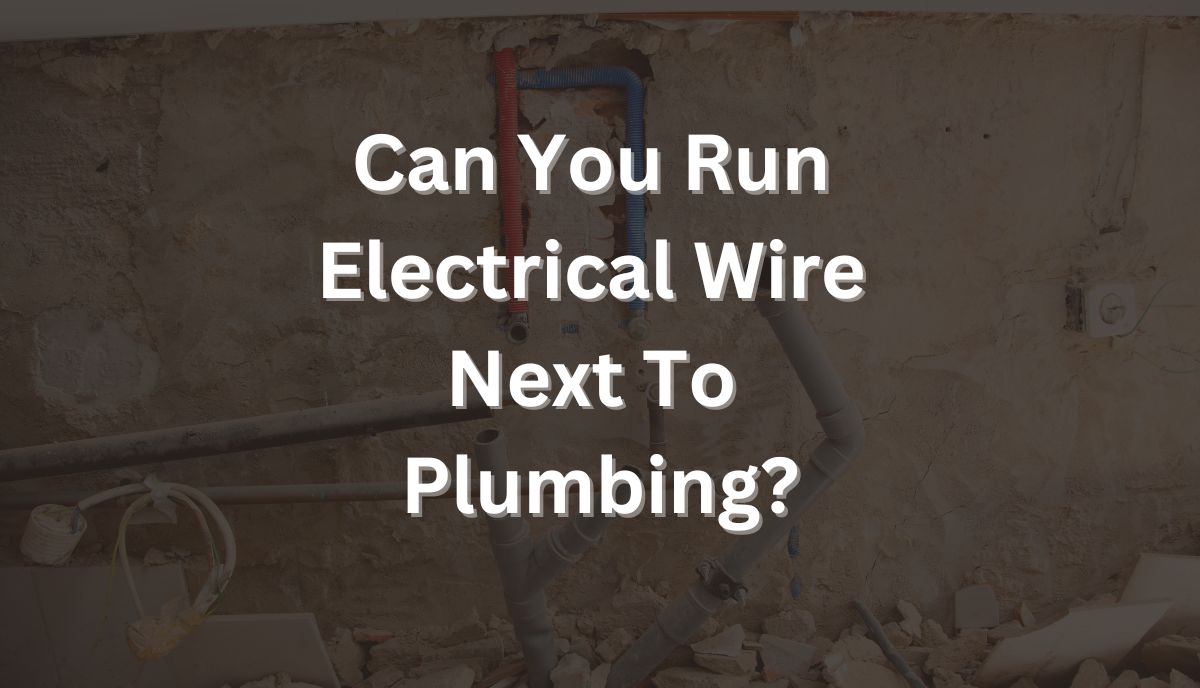You can run electrical wires near plumbing, but keep a safe distance – typically 12 inches for water and electricity. Safety is crucial; ignore it, and you risk electrocution, fires, and potential damage.
The following may challenge your perception of electrical lines and plumbing systems:
1). Electricity VS Plumbing
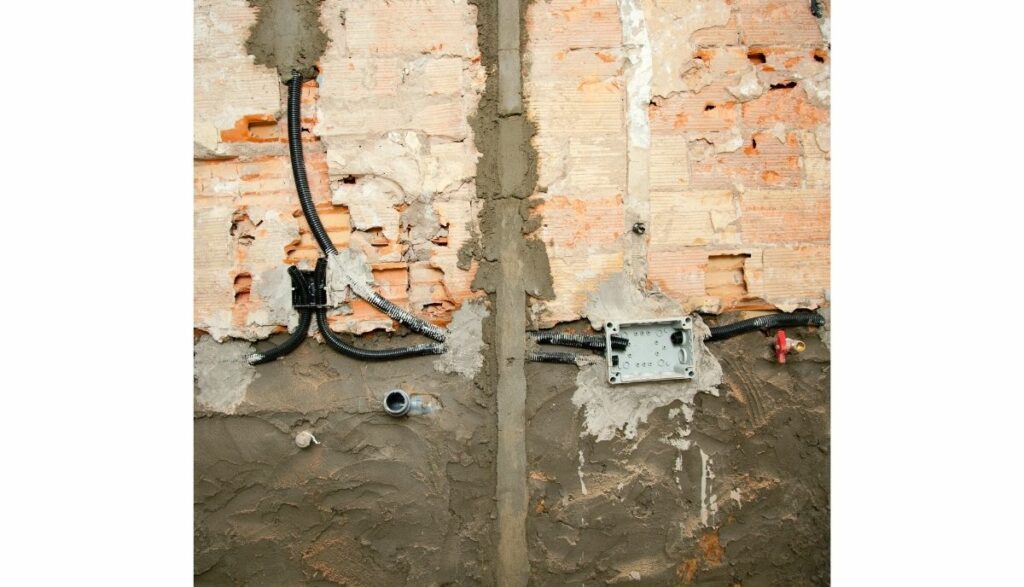
The picture shows plumbing pipes and electrical cables (and conduits) sitting inches away from each other above a water heater. This indicates that electrical and water utilities can exist within the same space. What about this paper from Lee B. Hertzberg and Arthur G. Clark in the American Water Works Association Journal?
It highlights the close relationship between water and electric utilities. Electric utilities consist of high-voltage lines, transformers, and service wires. They protect your equipment from lightning by sending the excess current to the ground using lightning arresters.
Why does that matter? Many laypeople are surprised to learn that metallic water pipes can provide a ground connection for your home’s electrical system. In other words, electrical and water systems are not as opposed to one another as you may assume.
2). Installation Setting And Distance
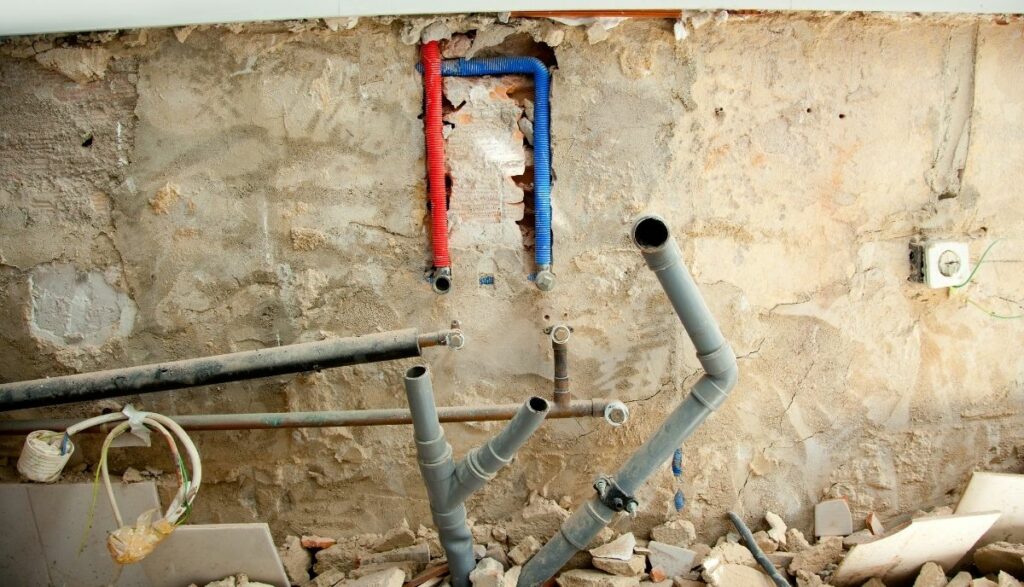
The setting is critical because it influences the distance between electrical lines and water pipes. For instance, you can easily run electrical and plumbing lines through the same wall if the wall in question is long.
This allows you to restrict the systems to opposite ends of the wall. They don’t have to touch. Short walls are challenging because the electricity and plumbing systems are more likely to touch.
In fact, you may rapture the water pipes while drilling holes for the electrical wiring or vice versa. But again, contractors run these two systems within close proximity to one another all the time. Look at your bathroom. It has electrical and plumbing lines running through the same walls to bring water and power to the sockets, switches, sinks, showers, and toilets.
3). Plumbing Material
The plumbing material is probably the most important consideration. As was noted earlier, electricians can use metallic water pipes to create grounding connections. What does that tell you?
Metallic pipes carry electricity. Therefore, putting water and electrical lines close to each other creates an electrocution hazard. Fortunately, you have other options. This thesis from the School of Technology, Brigham Young University, noted that the global production and consumption of PVC (Polyvinyl Chloride) reached 34.5 million tonnes in 2008.
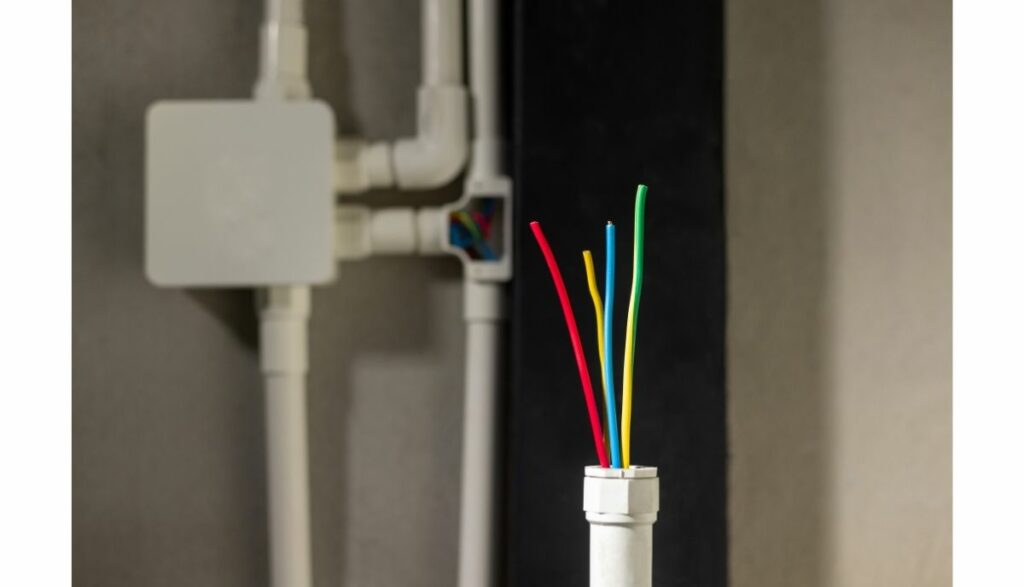
The construction industry favors the material for water pipes and electrical conduits. Unlike metallic tubing, PVC won’t conduct electricity.
Then again, PVC won’t help you if you buy poor-quality pipes. They will break, exposing the bare electrical conductors within while also allowing the water to leak.
This is why experts are so important. You can trust them to select high-quality piping for your plumbing and electrical installations.
4). Water Temperature
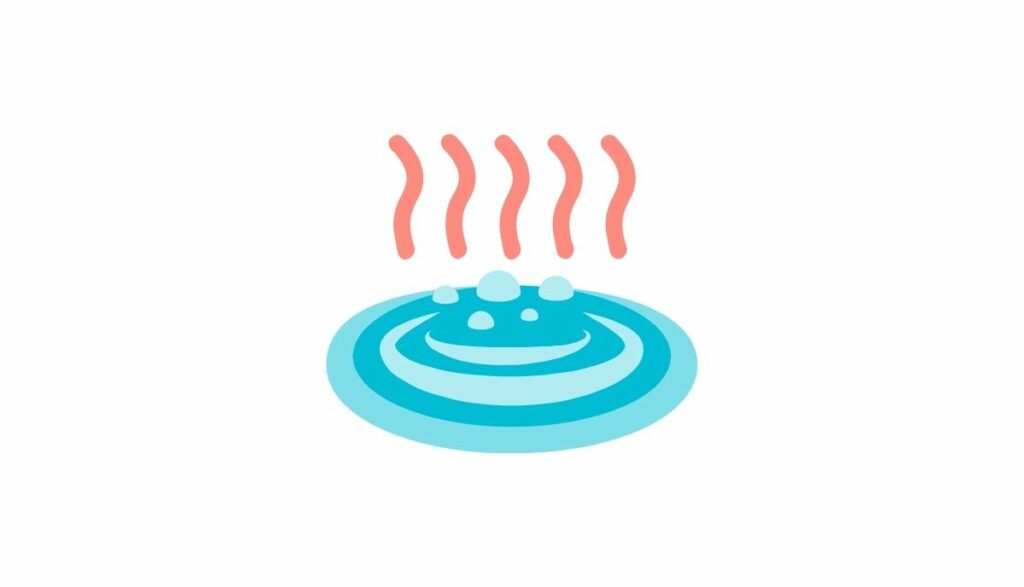
Pipes that carry hot water are a bad idea because they are more likely to melt the insulation on the electrical lines, exposing the bare conductors and creating a short circuit. This does not mean electrical wires cannot run besides hot water pipes. You can take precautions to protect your setup.
Is It Safe To Run Electrical Wires In Close Proximity To Plumbing Pipes?
It is safe to run electrical wire in close proximity to plumbing pipes based on expertise, materials, configuration, and water temperature. Your biggest concern is the possibility of electrocution, which can occur because of the following:
- Faulty Neutral Connection
If you’ve recorded a return current running through the ground (metallic water pipe) to the transformer, a faulty neutral connection to the electrical service is to blame. You should also look for a reverse connection on the service wire entering your home.
- Electrical Faults
Even if you hire a professional, mistakes can still occur. Wires can break, and appliances can malfunction, energizing metallic water pipes in the process. Contractors include safety devices such as fuses and circuit breakers that trip when a fault occurs. But those safety devices can also fail.
You may not realize that things have gone wrong until you touch a metallic water pipe during repairs.
- Short To Neutral Conductor
An active conductor running from the electrical service to your home can burn the neutral off the transformer after shorting to the neutral conductor, energizing the metallic water pipe.
- Lightning Strike
You can’t always blame shocks on a water pipe’s close proximity to an electrical wire. Lightning can strike the water pipe directly.
Don’t downplay the electrocution hazards associated with plumbing. This Sydney Water Australia guide has identified 75 shocks reported by plumbers between 1997 and 2009. Four of them led to deaths. The guide has included a diagram that shows the link between water and electrical utilities in the average home.
This National Fire Protection Association (NFPA) guide encourages plumbers to undertake training in hazard recognition before they tamper with electrical systems. Keep in mind that water pipes can break, creating a short by flooding the electrical connectors.
What Are The Electrical Code Regulations Regarding The Placement Of Wires Near Plumbing?

The National Electrical Code won’t recommend a minimum distance between electrical and plumbing lines. Neither will they encourage or discourage the practice. But they suggest contractors keep overhead conductors 10 feet away from hot tubs and spas.
They also prohibit the installation of electrical wires under water bodies. You must pull wiring near bodies of water through RMC, IMC, or nonmetallic raceways.
How Can I Ensure The Safety Of Electrical Wires When Installed Near Plumbing In My Home?
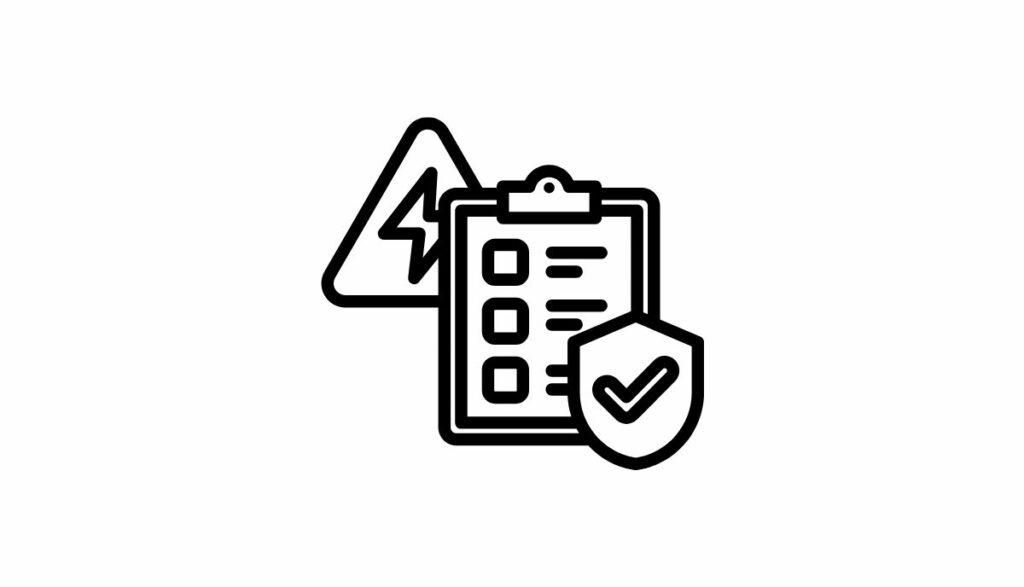
While installing electrical and water lines next to one another presents a risk, you can make the practice safer by applying the following precautions:
- Flooding is a significant concern. Once a pipe breaks, the water may reach every electrical line in the vicinity. But if the pipe is merely leaking, it helps to position the electrical wire above the plumbing system. After all, leaking water drips down. It won’t drip up.
- Maintain a healthy distance between hot water pipes and electrical lines to prevent the wire’s jacket from melting.
- Even if the water pipe is cold, you should maintain a few inches between the plumbing and electrical utilities. I recommend 12 inches for water and electricity and 24 inches for sewage and electricity.
- Use competent experts. Hire licensed electricians to check the electrical work and knowledgeable plumbers to scrutinize the plumbing installations.
- Use voltage testers before tampering with water and electrical lines in the same location.
- If you have doubts about the installation, don’t touch metallic water pipes without turning the electrical load off.
- Wear insulated gloves and boots before performing repairs and installations, especially if the electrical wires next to the plumbing are energized.
- Contractors should talk to the homeowner before performing installations and repairs, especially if you feel a tingling sensation after touching a water pipe. Find out who installed the electrical and water utilities and what they did.
- Check your local code. Even though the NEC is silent on this issue, your local code may regulate the distance between electrical and plumbing lines.

